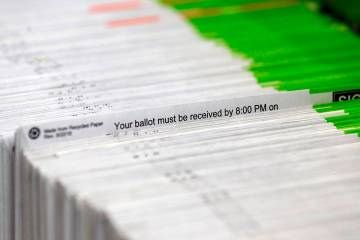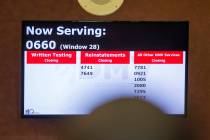EDITORIAL: The Clark County School District should push for flexibility with state class-size reduction money
Following the State of the State address last week, Pat Skorkowsky voiced his opposition to the governor’s plan to set aside $60 million for an innovative school choice plan designed to give parents and their children more educational options.
Mr. Skorkowsky, superintendent of the Clark County School District, argued that the money would be better spent on endeavors designed to improve the public schools. His position echoes others from within the education establishment, for whom the current system works just fine.
Interestingly, less than a day later the state released an audit which found the district had failed to use all of its 2013-15 funding allotment for class-size reduction and would have to return more than $6 million to Carson City. Turns out the district couldn’t hire enough teachers or find the classroom space to spend all the money intended to keep kindergarten classes below 22 students.
Perhaps there’s a lesson here.
State lawmakers implemented class-size reduction more than a quarter century ago in an effort to boost student achievement in the lower grades. Under the measure as it currently stands, the student-teacher ratio must be no more than 21-to-1 in kindergarten, 16-to-1 in first and second grade and 19-to-1 in third grade. The program carries a hefty price tag — in 2015 it cost $127 million in Clark County alone.
The lower class sizes are exceptionally popular with parents — and with teacher union leaders, who view them as an easy way to beef up the dues-paying membership ranks. But the bill that established the benchmarks included no accountability safeguards, at all. Despite the massive expense, district and state test scores in these grades have shown no tangible improvement over the years — and, indeed, continue to be downright abysmal in many schools.
This isn’t surprising. Many studies have concluded that class size is not among the most significant factors in student success. “The minimal return on investment from these programs is a finding around which there is broad agreement,” wrote Nancy L. Brune and Megan K. Rauch last year for the Kenny Guinn Center for Policy Priorities, a moderate Las Vegas think tank.
Nobody is talking about jamming 40 kids in a kindergarten class. Just a tiny adjustment could save millions. In fact, the left-of-center Brookings Institute concluded that increasing class sizes by just one student would save the nation $12 billion annually.
Which brings us back to Mr. Skorkowsky.
Rather than fretting over Gov. Brian Sandoval’s education savings account experiment, which remains on hold pending legislative action, Mr. Skorkowsky might be better off bucking the teacher unions and asking the Legislature to give the district more flexibility when it comes to spending the millions of dollars the state pours into a class-size reduction effort that has borne little fruit over the past 25 years.
Whether school choice succeeds in Nevada remains to be seen. But the results are clear for class-size reduction. If there’s a big pot of money that might be “better spent” in the drive to get Nevada students up to speed academically, it’s already right under Mr. Skorkowsky’s nose.




























